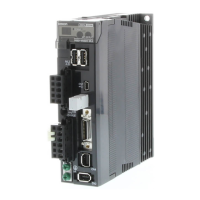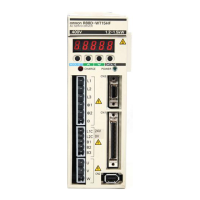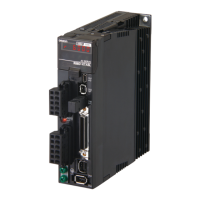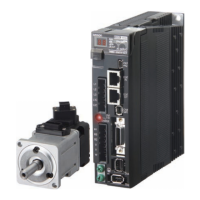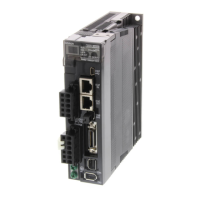6-1
6-1 Operational Procedure
6
Operation
6Operation
6-1 Operational Procedure
After installation and wiring, turn ON the power and check the operation of the Servomotor and
Servo Drive. Then make the function settings as required according to the use of the Servomotor
and Servo Drive. If the parameters are set incorrectly, there is a danger of the Servomotor operating
in an unpredictable manner. Set the parameters according to the instructions in this manual.
↓
↓
↓
↓
↓
↓
↓
Item Contents Reference
Mounting and
installation
Install the Servomotor and Servo Drive according to the installation
conditions. (Do not connect the Servomotor to the mechanical system
before checking the no-load operation.)
Chapter 4
Page 4-1
Wiring and
connections
Connect the Servomotor and Servo Drive to the power supply and
peripheral devices.
*Specified installation and wiring requirements must be satisfied,
particularly for models conforming to the EC Directives.
Chapter 4
Page 4-12
Preparing for
operation
Check the necessary items and then turn ON the power supply.
Check with the display indications to see whether there are any
internal errors in the Servo Drive.
Chapter 6
Page 6-2
Checking
operation
Check the operation of the Servomotor and Servo Drive by
performing jogging operations without a load.
Chapter 6
Page 6-4
Setting
functions
Set the functions according to the operating conditions with the
user parameters.
Chapter 5
Page 5-17
Trial operation
To enable the parameter settings, turn OFF the power first.
Connect the Servomotor to the mechanical system.
Turn ON the power, and check to see whether protective functions,
such as the emergency stop and operational limits, work properly.
Check operation without a workpiece, or with dummy workpieces
at low and high speed. (Operate using commands from a position
controller.)
Chapter 6
Page 6-22
Adjustments
Manually adjust the gain if necessary. Further adjust the various
functions to improve the control performance.
Chapter 7
Operation
Operation can now be started. If any problems should occur, refer
to Chapter 8 Troubleshooting.
Chapter 8
